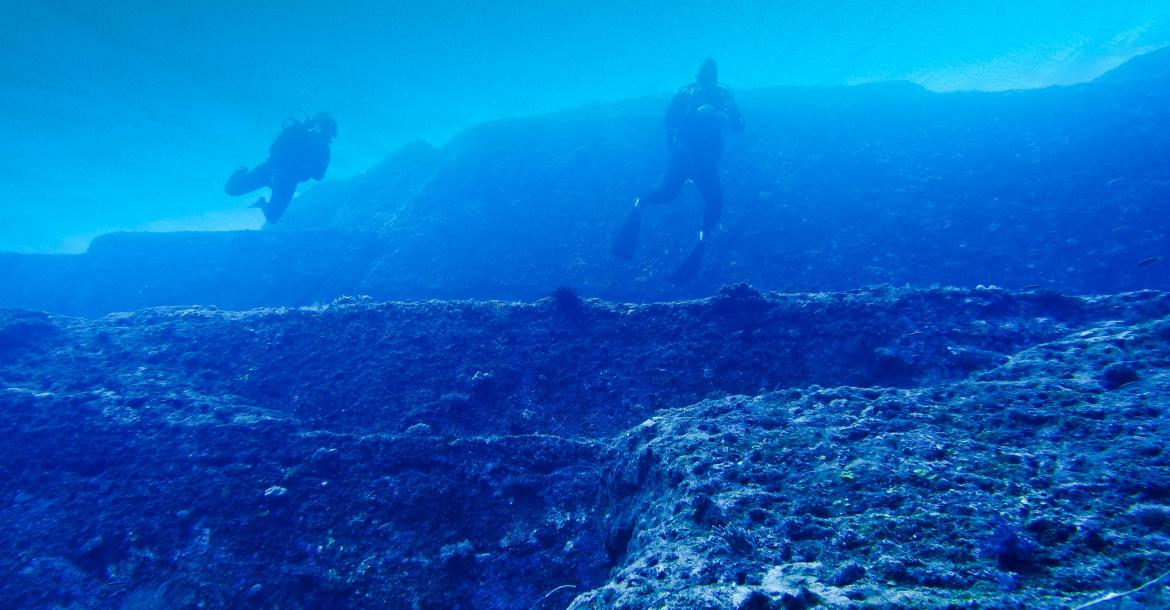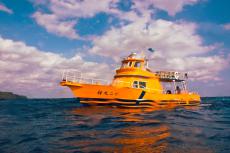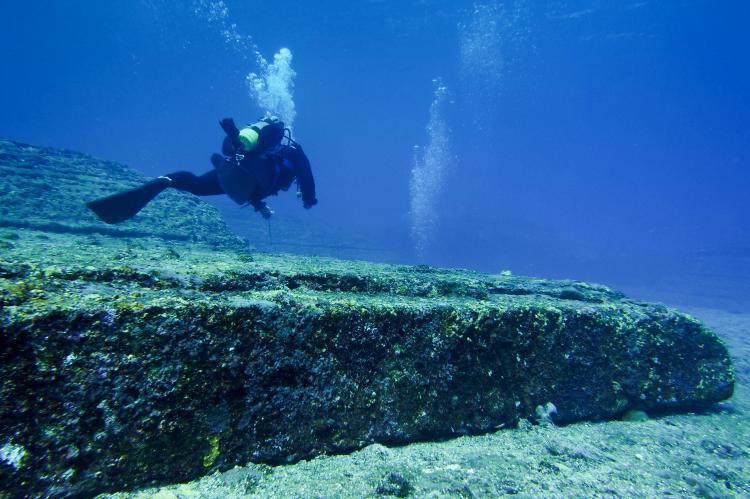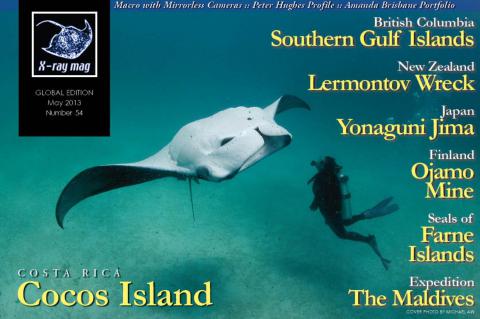Yonaguni Jima
Lured by stories of schooling hammerhead sharks and a lost city submerged below the surface, Farhat Jah headed out on the long journey to Japan’s westernmost island.
The sun rose on a small outcrop of rock in the Pacific Ocean. The sea was calm, but a steady roll of small waves slid up to the coast and then petered out on a seemingly invisible reef. The sun was warm but muted at this hour. A fishing boat motored slowly out of the tiny harbour and headed for the horizon. I looked out over the balcony and saw a cow chewing on grass in the garden. It was January and at 7:45 in the morning, the sun had just risen on Yonaguni Jima—Japan’s forgotten isle.
UK 0117 370 9751 | US 1 720-890-8549 Email:
info@insidejapantours.com | info-usa@insidejapantours.com Twitter: @InsideJapan
Diving
Kihatchiro piloted his own boat. Stricken with polio, he dropped his crutches and nimbly disappeared up into the bridge of a 50ft metal hard boat made in Taiwan. We put our own kit together. This is Japanese style diving. It’s a bit like a British dive club renting a boat but with no one who can speak English. At Iseki Point, Doug briefed us: “Move away from the boat as soon as you can go down and move away.” He gave me the choice of a backward roll down two metres or a giant stride. Like a fool I choose the giant stride, the precarious jump into the water was done avoiding the three ladders that hung off the stern. Cisca had short legs and cleared hers by six inches. I needed a camera. Unfamiliar with the system I wondered what to do when Doug came to my rescue. “I’ll take it,” he said. And when I took a giant stride in, he merely rolled in backwards and took the pressure of the water on his back. “I could have done that,” I muttered, as we submerged below the surface. The cool 23°C water seeped slowly into the wetsuit. Doug handed me my Olympus OMD. It’s as small as my G12 housing and actually lighter. I clipped it on, and we started to descend. Cisca’s Suunto dive computer turned on and then died. Needless to say, she was not overly happy, but she’s old school and always dives with her Momentum dive watch. She grimaced at me, as she twisted the bezel round and double checked her air and depth gauge. Day one of diving in Japan, and we really were back in the early 1990s! The other divemaster, Takashi San, took off with his Japanese client, a quiet but delightful vet from Nagoya. Doug let him go and took us slowly forward along a rock wall towards a swim through. But this was no ordinary swim through; it consisted of blocks of stone placed here in an arch. We went through these and popped out into what looked like a street. The rock was smooth and barely covered with algae. It differed from every other part of this island and had steps. I was bewildered, trying to take in a scene similar to the Mayan pyramids, (...)Download the full article ⬇︎
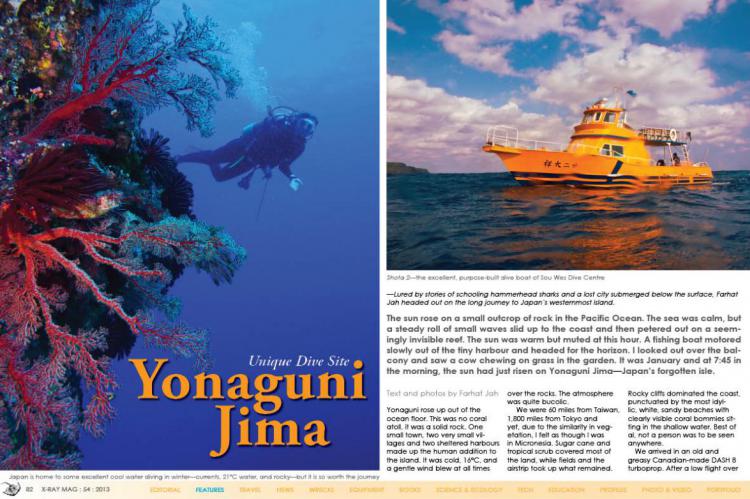
Originally published
X-Ray Mag #54
Diving Cocos Island; British Columbia's Southern Gulf Islands; Seals of Farne Islands; The Lermontov Wreck off New Zealand; Japan's Yonaguni Jima; Finland's Ojamo Mine; Expedition to the Maldives; Dive Fitness Programs for Divers; Scuba Instructor Training; Tech: Self-Sufficiency vs Team Diving; Macro with Mirrorless Cameras; Peter Hughes Profile; Frozen Water: Amanda Brisbane's Sand Cast Glass; Plus news and discoveries, equipment and training news, books and media, underwater photo and video equipment, turtle news, shark tales, whale tales and much more...

